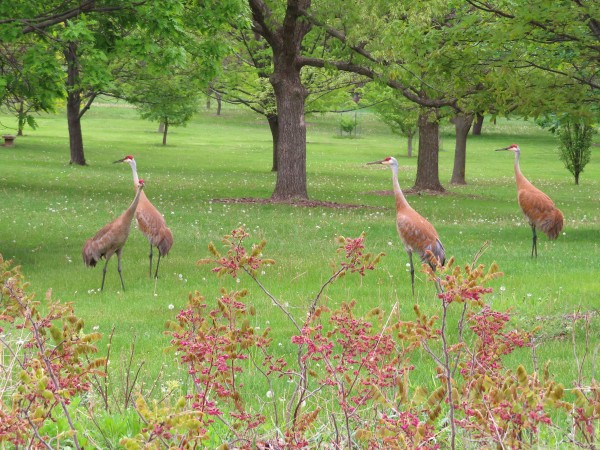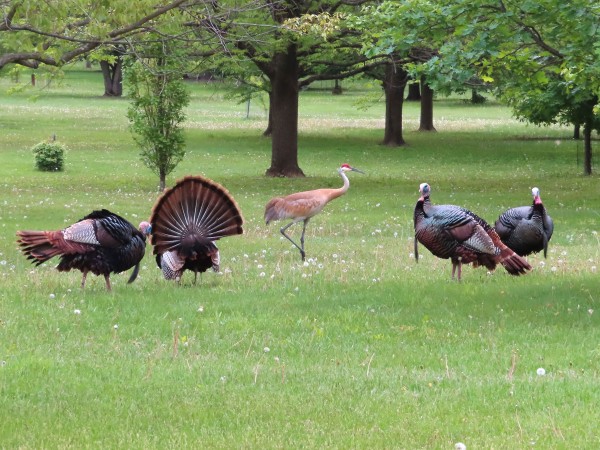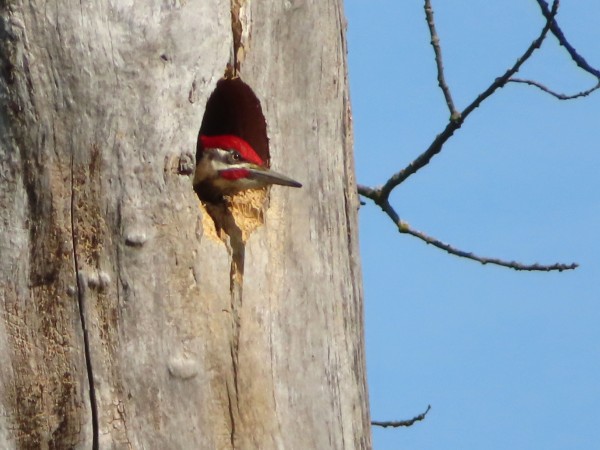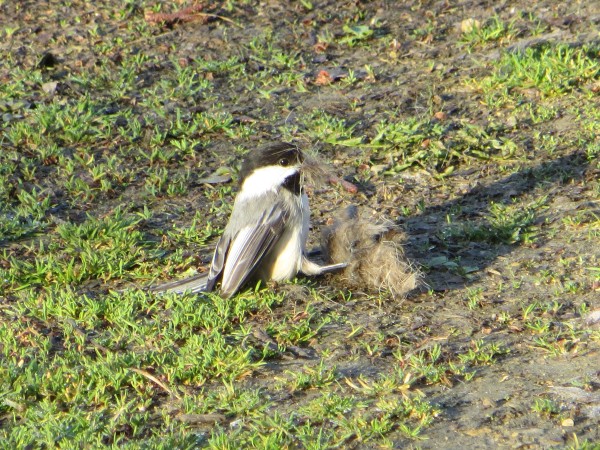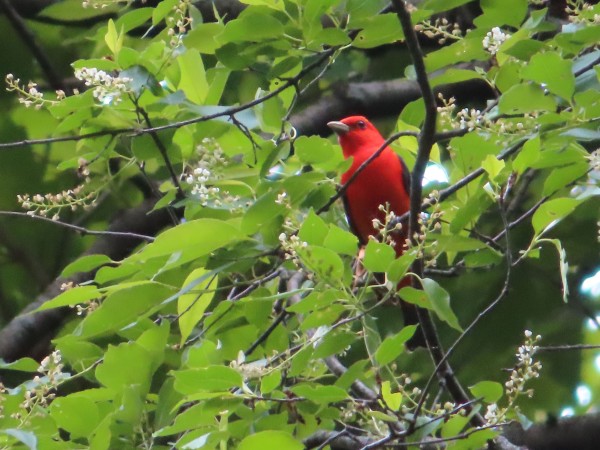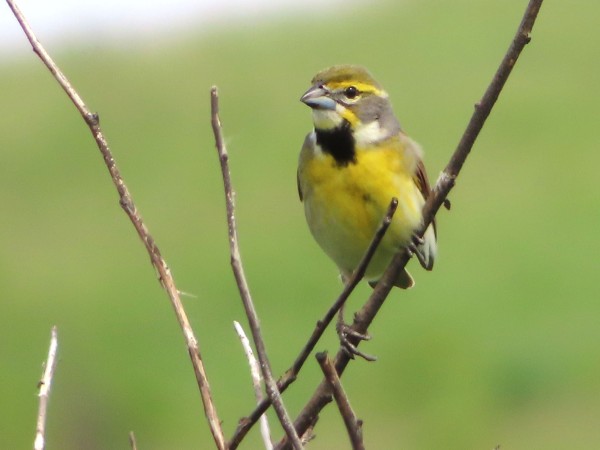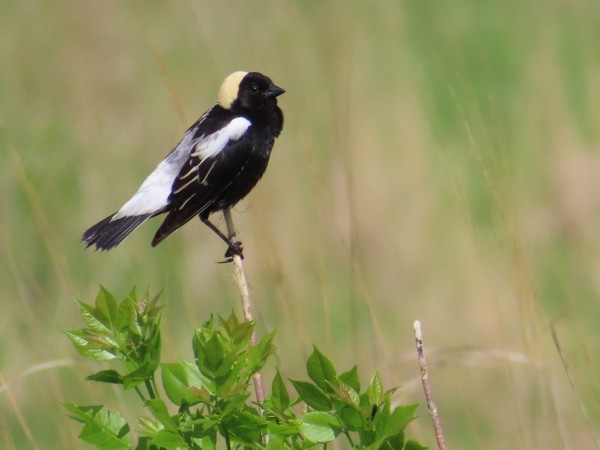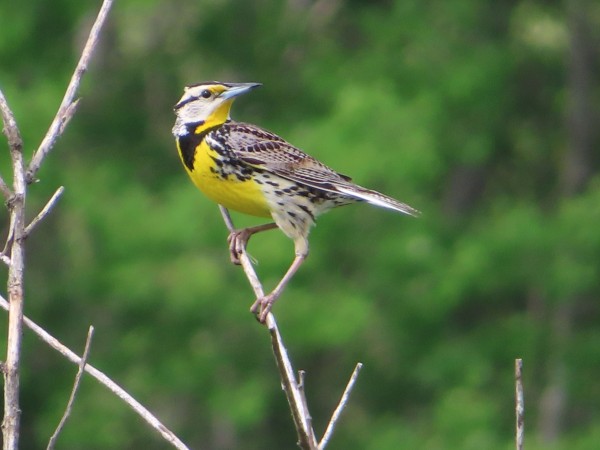Chuck's Birding Report #115
24 May - 30 May 2022
Dear fellow flock of birders,
What’s happening in the bird world these days?
It appears that the arrival of new birds from migration has ended. Of course there are always a few stragglers. Now it’s nesting time with egg laying, hatching of eggs, feeding of nestlings and feeding of fledglings. I’ve seen a couple American Robins nests with nestlings, mouths wide open, being fed by their parents. I’ve also seen some fledglings beginning to appear, having left the nest. They still beg for food from their parents as they follow their parents wherever they go. I’ve seen House Finch fledglings fluttering their wings in front of their parents which means “feed me, feed me”. I’ve also seen my first fledgling American Robin with spots on its breast and belly that prove they are in the thrush family. There will be many more to come.
As for warblers, there are many Yellow Warblers and Common Yellowthroats out on Curtis Prairie. I’m sure they have begun to nest. I’ve also seen American Redstarts at the west end of the Visitor Center parking lot in a thicket that was used last year for nesting. The same site will most likely be used again this year by the American Redstarts.
The Sandhill Cranes are still on the nest at Teal Pond. Today is the 30th day of incubation since the nest was first observed on the last day of April. Since the incubation period for Sandhill Cranes is 29 – 32 days, hatching should occur anytime now. I check the nest every day. I’ve seen the one adult arrive early in the morning to exchange incubation duties with the adult on the nest. Both sexes of Sandhill cranes share the incubation duties. I’ve also seen a single Sandhill Crane land on top of the Visitor Center as if to play king of the hill or head bird of the Arboretum. I think it may be the male Sandhill Crane who then flies to the nest to take over incubation duties in which case the bugling might mean “I’m going to be a father soon.” A photo of the rooftop crane is included.
Last week my group saw a group of 5 Sandhill Cranes in Longenecker Garden. A photo of the 5 cranes is included. Nearby was a group of 4 male Wild Turkeys. The two groups actually approached each other. We wondered what would happen. The turkeys turned out to be the aggressors, made one crane run away and slowly moved the other cranes away. A photo of the four Wild Turkeys and one Sandhill Crane is included.
The other day I was walking toward Teal Pond when all of a sudden 5 Turkey Vultures sprang from the long grass on Teal Pond Marsh. That was a first for me. There might have been something dead in the grass and I disturbed their feeding. They did not fly away but instead perched in some of the snags nearby. This allowed me to take a few photos of these beauties. The red, featherless head is the most appealing, or rather distinctive, feature of these vultures. A photo of one Turkey Vulture is included.
As I said last week I hadn’t seen any activity around the Pileated Woodpecker nest hole in the snag just west of Pond 2. Well, this past week I’ve had two occasions where Pileated Woodpeckers have stuck their heads out of the nest hole. On both occasions I’ve been able to capture photos. The first time I saw one sex and on the second viewing, today, the head was that of the opposite sex. Since there has been no feeding activity at the hole, these are both adult woodpeckers. One of the photos of a Pileated Woodpecker is included. Can you determine what sex it is?
Last week Tuesday we saw a Black-capped Chickadee using one of the bluebird nest boxes. That reminded me of how the BCCH builds its nest and what I witnessed several years ago. First the chickadee puts several layers of moss down. On the very top it puts a layer of rabbit fur. That brought up the question of how it gets the rabbit fur. Does it chase the rabbit and grab some fur from it? I don’t think so. What I saw was a chickadee pulling rabbit fur from Coyote scat (poop). The scat had been on the ground for some time so it was well washed (That’s a bit of a stretch.). I watched the chickadee struggle by holding the scat on the ground with its feet and pulling on the fur in its beak to try to extract it from the scat. In fact it pulled so hard that it fell on its rear. I told my group that I had a photo of that activity and they asked me to post it in my next report. So included is the Black-capped Chickadee with a mouthful of rabbit fur extracted from the scat. A mouthful of rabbit fur extracted from scat sounds yummy! Note how the chickadee is sitting after all that work.
Today on my walk in the Arb and more specifically in Wingra Woods, I heard the burry song of the Scarlet Tanager. I have heard it sing from that spot several times. It sings constantly from high in the canopy. I think it may be trying to attract a female. In the past I have looked and looked for the tanager but failed to find it every time. Today I got lucky and found it. I even got an okay photo of it. That red is so brilliant, especially in contrast to the black wings and tail. A photo of the Scarlet Tanager is included.
My last three photos are not from the Arboretum although we do see these grassland birds pass through the Arb once in a while. This is not where they like to stay and nest. Maybe the noise of the beltline or all the people who come to visit do not appeal to them. Whatever the reason, they move to other grassland areas. All three can be found in places like the Thomson Memorial Prairie, the Erbe Grassland Preserve and the Brooklyn Wildlife Areas along Bellbrook Rd. The photos that are attached are of the Dickcissel, the Bobolink and the Eastern Meadowlark. I hope you can all go to some of these grassland areas to see these birds. They are some of my favorites.
That’s the Arboretum bird report for the past week.
I wish all of you good health and good birding too,
Chuck


